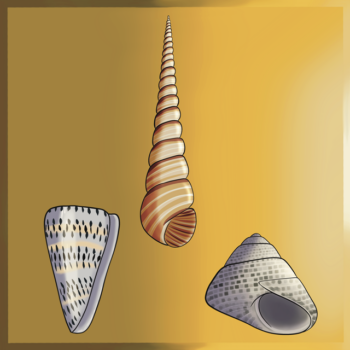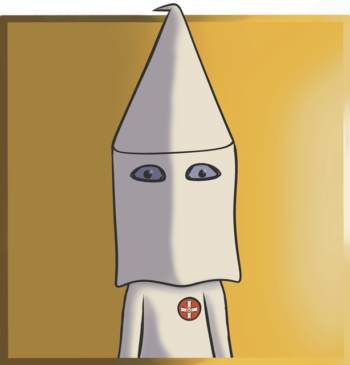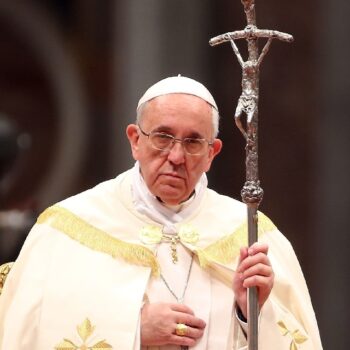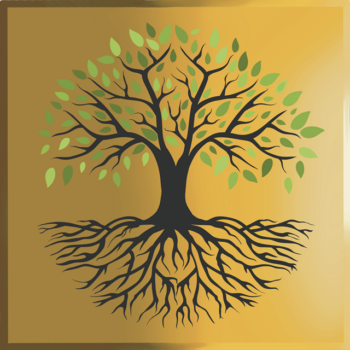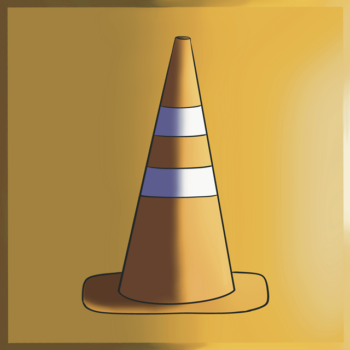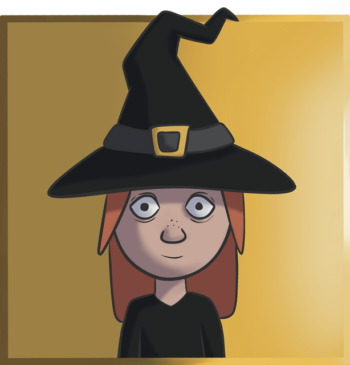Definition:
A language is a structured collection of patterns associated with ideas. Language is the tool of communication.
Etymology:
The word “language” comes from the Old French word “langage,” which originally referred to “words” or “what is said.” The Old French term ultimately derives from the Latin word “lingua,” meaning “tongue” or “speech.”
Description:
Language comes in three main forms: chemoreceptive language, audible language and visual language. The language of sensing is often included as a main form of language since it’s actually possible to teach a human born deafblind to communicate with the use of braille and/or vibrations. But it’s unnecessary to include the language of sensing since braille is something which can be detected visually by someone or something, and vibrations is something which can be heard by someone or something. We will definitely not include telepathic language since telepathy is impossible.
Articles:
Beginning and End
Definition: The term “beginning” refers to the initial point or starting phase of something, while “end” denotes the conclusion or final stage. These terms are often used to describe the…
Chemoreceptive Language
Definition: Chemoreceptive language refers to the communication system used by organisms to perceive and interpret chemical signals in their environment. Etymology: The term “chemoreceptive” can be broken down into two…
Definition
Definition: A definition is a clear and precise description or explanation of the meaning, nature, or characteristics of a term, an object, an idea, or an action. Etymology: The word…
Dialect
Definition: A “dialect” is a particular form of a language that is specific to a region, community, or social group. It encompasses distinct vocabulary, grammar, and pronunciation. Etymology: The term…
Dysphemism and Euphemism
Definition: A “dysphemism” is a derogatory or unpleasant term used instead of a more neutral or positive one. It is the opposite of a euphemism, which is a mild or…
Etymology
Definition: Etymology refers to the study of the origins and historical development of words, including their meanings, forms, and relationships with other words. Etymology: The word “etymology” originates from the…
Evolutionary Tree
Definition: An evolutionary tree, often referred to as a phylogenetic tree, is a visual representation of the evolutionary relationships between different species or groups of organisms. Etymology: The word “evolution”…
Hierarchy
Definition: “Hierarchy” is a structure that categorizes units or individuals based on relative levels of authority, power, or importance. Etymology: The word “hierarchy” originates from the Greek word “hierarkhia,” composed…
Hyperbole
Definition: “Hyperbole” is a rhetorical technique that involves exaggerated statements or claims not meant to be taken literally. It is used for emphasis, humor, or dramatic effect. Etymology: The term…
Idiom
Definition: An “idiom” is a phrase or expression that has a figurative meaning different from the literal meaning of the individual words. Idioms are often culturally specific and can be…
Illuminati
Definition: “Illuminati” refers to individuals who understand how language, religion, and the world system are scams. Etymology: The term “Illuminati” originates from Latin and means “the enlightened.” It is derived…
Jargon and Terminology
Definition: “Jargon” refers to specialized language used by a particular profession, group, or activity. It consists of words and phrases that are specific to a field and may not be…
Litotes
Definition: “Litotes” is a rhetorical technique that involves making an affirmative statement by negating its opposite. It is a form of understatement that uses double negatives or negation to express…
Oxymoron
Definition: An “oxymoron” is a figure of speech in which two seemingly contradictory or opposing terms are combined to create a rhetorical effect or to reveal a paradox. Etymology: The…
Palindrome
Definition: A “palindrome” is a word, phrase, number, or other sequences of characters that reads the same forward and backward (ignoring spaces, punctuation, and capitalization). Palindromes can be simple, single…
Paradox
Definition: A “paradox” is a statement, proposition, or situation that appears to be self-contradictory or logically impossible, yet may reveal an illusion upon closer examination. Etymology: The term “paradox” comes…
Proverb
Definition: A “proverb” is a short, commonly known saying that intend to express a general truth, piece of advice, or moral lesson. Proverbs are often metaphorical and use simple, vivid…
Religion
Definition: A religion is a structured collection of lies designed to limit language. Etymology: The word “religion” originates from the Latin word “religio,” which has several proposed meanings, including “reverence…
Sacred Word
Definition: A “sacred word” is a term or phrase considered holy, revered, and imbued with deep meaning, by religious people, often used in rituals, prayers, or sacred texts. Etymology: The…
Slang
Definition: “Slang” refers to informal, often transient language that consists of words and phrases regarded as very informal, more common in speech than writing, and typically restricted to a particular…
Slogan
Definition: A “slogan” is a short, memorable phrase or motto used to capture the essence of a brand, idea, campaign, or movement. Slogans are designed to be catchy and easy…
Symbolism
Definition: A symbol is a pattern with an association. Etymology: The word “symbol” traces its origins back to the Greek word “symbolon,” which referred to a token or sign of…
Synonyms, Antonyms and Autoantonyms
Definition: Synonyms are symbols that have exactly precisely accurately identical meaning. Antonym is a word that has the opposite meaning of another word. An autoantonym, also known as contronym or…
Tower of Babel
Pieter Bruegel the Elder: The Tower of Babel (1563). Lucas van Valckenborch: Tower of Babel (1594). Gustave Doré: The Confusion of Tongues. Definition: “Babel’s Tower” is a fictional tower from…
Web of Language
Description: Religion works like a network in the brain. At the center of the web is the concept of God’s existence. In every cross of the web around the word…
Word
Definition: A word is a symbol that consists of a combination of letters with matching sounds, and symbolizes a meaning which can be used to construct sentences. Etymology: The word…
World System
Definition: The term “world system” typically refers to the complex, interconnected network of economic, political, social, religious, and cultural relationships that extend across national boundaries and encompass the entire earth….
Symbolism:
Articles:
A
Definition: The letter “A” is the first letter of many alphabets, including but not limited to the modern English alphabet. Etymology: The symbol for the letter “A” originates from the…
Anthill
Definition: An “anthill” is a mound-like structure built by ants, consisting of soil, sand, or other materials, which serves as the entrance and ventilation system to their underground colony. It…
B
Definition: The letter “B” is the second letter of many alphabets, including but not limited to the modern English alphabet. Etymology: The symbol for the letter “B” originates from the…
Beehive
Definition: A “beehive” is a structure created by bees or provided by humans for bees to live in. It serves as a habitat for the colony, facilitating the production of…
Butt Plug
Definition: A “butt plug” is a type of sex toy designed to be inserted into the rectum for sexual pleasure, stimulation, or training. Etymology: The term “butt plug” combines “butt,”…
C
Definition: The letter “C” is the third letter of many alphabets, including but not limited to the modern English alphabet. Etymology: The letter “C” originates from the Phonecion the alphabet,…
Caduceus
Definition: The “caduceus” is a symbol traditionally associated with Hermes (Mercury in Roman mythology), the Greek god of messengers, commerce, and trade. It features a short staff entwined by two…
Christmas Tree
Definition: A “Christmas tree” is an evergreen tree, often a fir, spruce, or pine, decorated with lights, ornaments, tinsel, and other Christmas decorations. Etymology: The term “Christmas tree” combines “Christmas,”…
Cone
Definition: A cone is a geometric figure with a circular base that tapers evenly to a single point, called the apex. Etymology: The word “cone” originates from the Latin word…
Conical Shell
Definition: A “conical shell” refers to a type of seashell that has a conical shape. Etymology: The term “conical” comes from the Greek “konikos,” meaning cone-shaped. “Shell” derives from the…
Conical Topiary Tree
Definition: A “conical topiary tree” is a tree or shrub that has been pruned and shaped into a cone form. Etymology: The term “topiary” comes from the Latin “topiarius,” meaning…
Cosmic Mountain
Definition: A “cosmic mountain” is a symbolic and mythological representation of a sacred or significant mountain that connects the heavens and the earth. It is seen as a central axis…
Dunce Cap
Definition: A “dunce cap” is a tall conical hat historically used as a form of punishment in schools. Etymology: The term “dunce” originates from the name of John Duns Scotus,…
Flag
Definition: A flag is a piece of fabric, often rectangular or square, that is attached by one edge to a pole or rope. Etymology: The word “flag” comes from the…
Ice Cream Cone
Definition: An ice cream cone is a conical-shaped edible container typically made from a crispy baked or molded material, such as waffle, wafer, or sugar cone. An ice cream cone…
Illuminati
Definition: “Illuminati” refers to individuals who understand how language, religion, and the world system are scams. Etymology: The term “Illuminati” originates from Latin and means “the enlightened.” It is derived…
Ku Klux Klan’s Hood
Definition: Ku Klux Klan’s white hood is a symbol associated with the Ku Klux Klan, a white supremacist hate group in the United States of America. Etymology: The Ku Klux…
Ladder
Definition: A “ladder” is a device or tool used to climb up or down heights. It typically consists of a series of horizontal rungs attached to two longer vertical side…
Megaphone
Definition: A megaphone is a device used to amplify sound. Etymology: The word “megaphone” comes from the Greek words “mega” (meaning “great” or “large”) and “phone” (meaning “voice” or “sound”)….
Mountain
Definition: A “mountain” is a large natural elevation of the earth’s surface that rises steeply from the surrounding level. Mountains are formed through geological processes such as plate tectonics, volcanic…
One (1)
Definition: The number “1” is the first and smallest natural number. It represents a unit, a single entity, or a quantity of one. In arithmetic, 1 serves as the multiplicative…
Papal Ferula
Definition: A “papal ferula” is a ceremonial staff carried by the Pope. Etymology: The term “ferula” comes from the Latin word “ferula,” meaning “rod” or “staff.” It has historically been…
Party Hat
Definition: A “party hat” is a festive accessory typically worn at celebrations such as birthdays, New Year Transition, and other joyous events. Etymology: The term “party hat” combines “party,” which…
Pine Cone
Definition: Pine cones, also known as conifer cones, are seed-bearing structures produced by pine trees. Etymology: The term “pine cone” comes from the Old English “pīn,” meaning “pine tree,” and…
Pyramid
Definition: A pyramid is a geometric shape with a polygonal base and triangular sides meeting at a single apex. Etymology: The term “pyramid” originates from the Greek word “pyramis,” meaning…
Santa Hat
Definition: A “Santa hat” is a festive piece of headwear typically worn during the Christmas season. Etymology: The term “Santa hat” is derived from “Santa Claus,” the popular figure associated…
Scepter
Definition: Scepters are ceremonial staffs held by rulers as a symbol of their authority and sovereignty. Etymology: The word “scepter” comes from the Latin “sceptrum,” which in turn is derived…
Seal of Solomon
Definition: The “Seal of Solomon,” also known as the “Ring of Solomon,” is a symbolic emblem attributed to King Solomon, a wise and powerful monarch in Jewish, Christian, and Islamic…
Spiderweb
Definition: A “spiderweb” (or “cobweb”) are networks of thin threads of silk spun by spiders to capture prey. Etymology: The word “spiderweb” comes from the Old English “spider” and “web,”…
Staff of Asclepius
Definition: The “Staff of Asclepius”, also knows as “Rod of Asclepius,” is a symbol associated with medicine and healthcare. It consists of a single serpent entwined around a rod. Etymology:…
Stairs
Definition: Stairs is a structure consisting of a series of steps arranged in an incline. Typically used for ascending or descending between different levels in a building or outdoor area….
Star of David
Definition: The “Star of David,” also known as the Magen David (Shield of David), is a hexagram or six-pointed star formed by two interlocking triangles. It is a prominent symbol…
Strawberry
Definition: A “strawberry” is a small, red fruit known for its sweet flavor and characteristic aroma. It is technically an aggregate accessory fruit, meaning that the fleshy part is derived…
The Great Seal of the United States of America
Definition: The Great Seal of the United States is a national seal that symbolizes the authority and sovereignty of the federal government. Description: The Great Seal was adopted by the…
The Tree of Life
Definition: The Tree of Life is a fictional concept and typically refers to a symbolic tree in various religions. Etymology: The term “Tree of Life” comes from the concept of…
The Tree of the Knowledge of Good and Evil
Peter Paul Rubens – The Fall of Man (1628-1629). Charles Joseph Natoire – The Rebuke of Adam and Eve (1740). Definition: “The Tree of the Knowledge of Good and Evil,”…
The World Tree
Oluf Olufsen Bagge – Yggdrasil, The Mundane Tree (1847). The World Tree is illustrated as a massive tree holding up the world with its three branches. The world is inside…
Three (3)
Definition: The number “3” is the third natural number following “2” and preceding “4.” It represents a quantity of three units or objects. Etymology: The etymology of the number “3”…
Thyrsus
Definition: A “thyrsus” is a staff or wand entwined with ivy and topped with a pine cone, associated with Dionysus (Bacchus), the Greek (and Roman) god of wine, fertility, and…
Tornado
Definition: A “tornado” is a rapidly rotating column of air that extends from a thunderstorm to the ground. It is characterized by its funnel shape and intense winds, which can…
Tower of Babel
Pieter Bruegel the Elder: The Tower of Babel (1563). Lucas van Valckenborch: Tower of Babel (1594). Gustave Doré: The Confusion of Tongues. Definition: “Babel’s Tower” is a fictional tower from…
Traffic Cone
Definition: A traffic cone is a brightly colored, conical-shaped safety device used to delineate traffic lanes or to redirect vehicles and pedestrians in a controlled manner. Etymology: The term “traffic…
Tree
Definition: A tree is a large perennial plant that typically has a trunk supporting branches and leaves. Etymology: The word “tree” comes from the Old English “trēow,” which is related…
Triangle
Definition: A triangle is a geometric figure consisting of three lines that meet at three corners, also called angles or vertices. The sum of the three angles in a triangle…
Two (2)
Definition: The number “2” is the second natural number and the smallest prime number. It represents a quantity of two or a pair. Etymology: The etymology of the number “2”…
Volcano
Definition: A “volcano” is a geological formation, typically a mountain, where molten rock (magma), ash, and gases from the Earth’s interior erupt through the Earth’s crust. Etymology: The word “volcano”…
Witch’s Hat
Definition: A witch’s hat is a hat worn by a witch. It’s typically a tall pointed, cone-shaped black hat with a wide brim. Etymology: The term “witch” comes from the…
Wizard’s Hat
Definition: A wizard’s hat is a hat worn by a wizard. It’s typically a tall pointed, cone-shaped hat with a wide brim, adorned with stars, moons, or other mystical symbols….
Zero (0)
Definition: The number “0,” often referred to as “zero,” is a mathematical symbol that represents the absence of quantity or value. Etymology: The etymology of the number “0” traces back…









